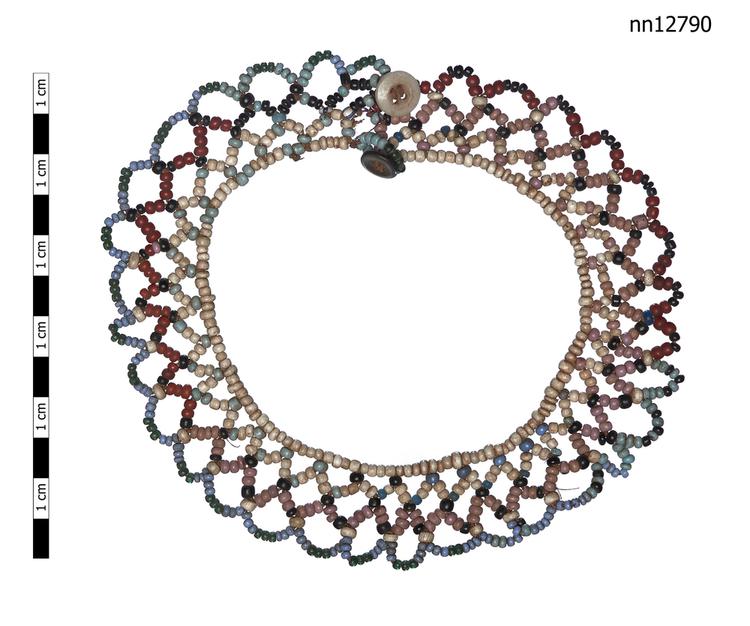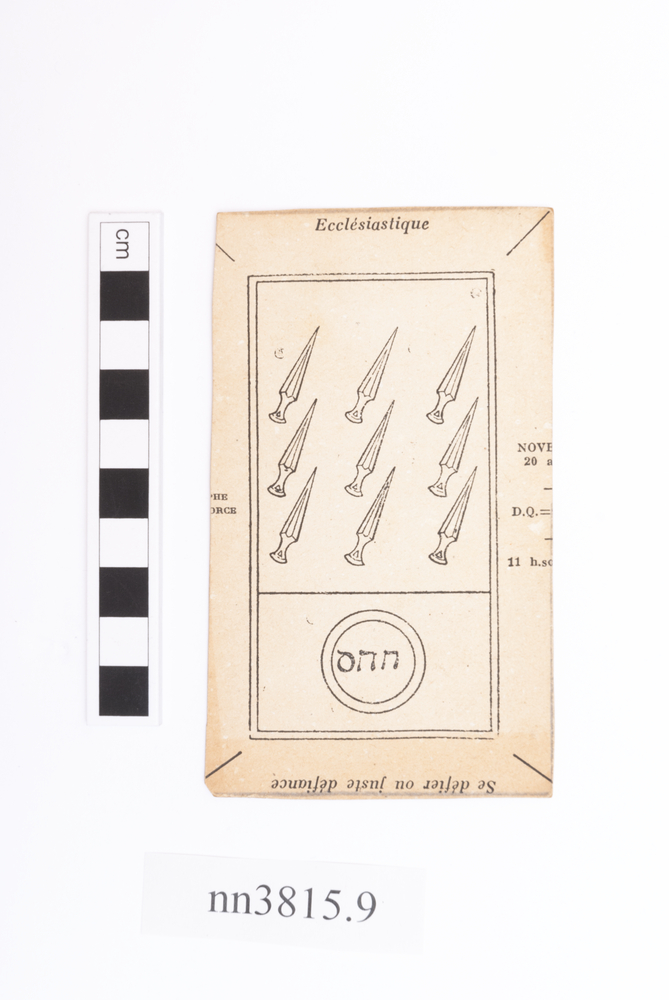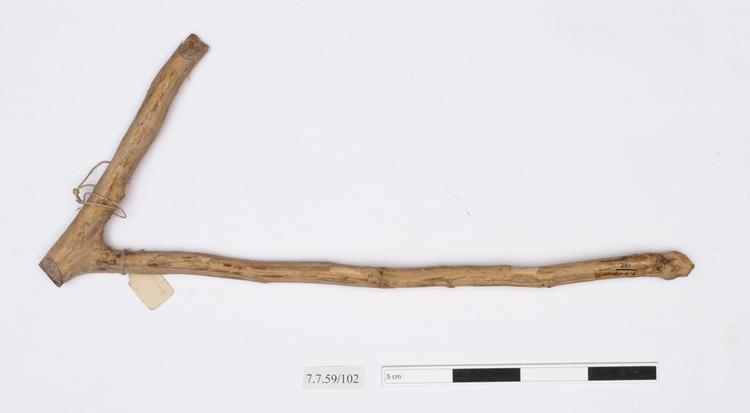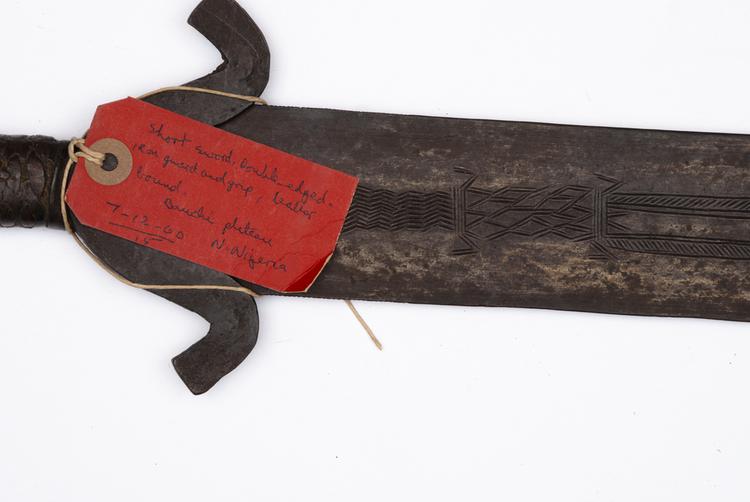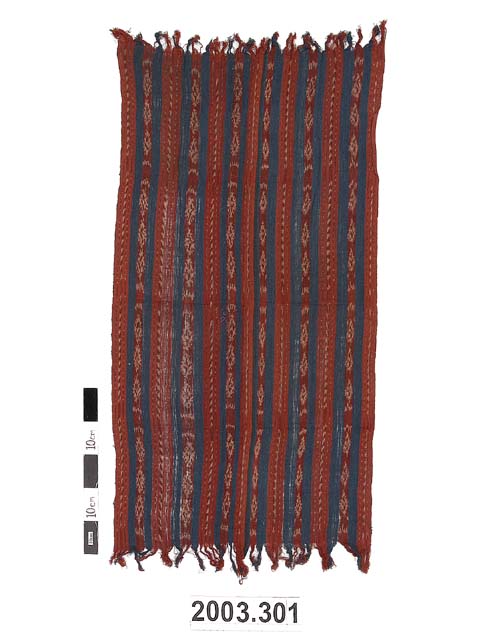
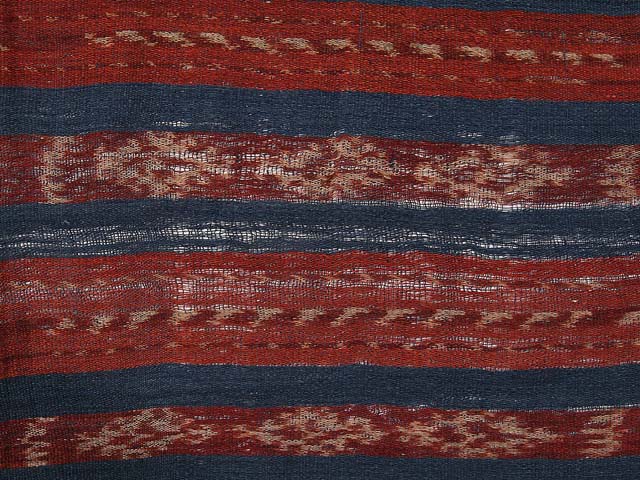
A ritual cloth ('hi'i mea') made from cotton and dyed with natural dyes. The textile was woven during a ceremony 'mane wai' for weaving funeral cloths. The fabric is a tabby woven warp-dominant ikat. Hi'i mea with such loose weaving are used to wrap a deceased person. The two unequal halves are sewn together at one selvedge. Each has six ikat stripes with cream patterns on a red ground alternating with solid blue-black stripes. The name of the cloth 'huri wo pidu' derives from the ikat stripes with the narrower patterns. These ikat bands are bordered with 'kelutu mea' (small motif comprising six threads, white and red) gives the name 'wo keraba' to the weaving. 'Wo keraba' is also the name of the trough for feeding pigs, which could not be explained in relation to this cloth. At either narrow end bundled red weft threads mark the end of the weaving. The ends of the warp are twisted, forming a fringe. The dyes used are indigo (blue-black) and Morinda citrifolia (red).



